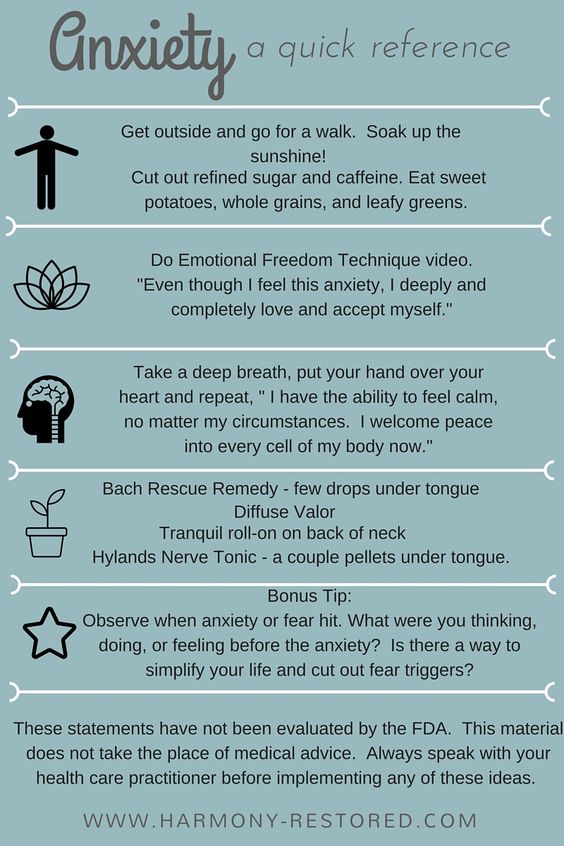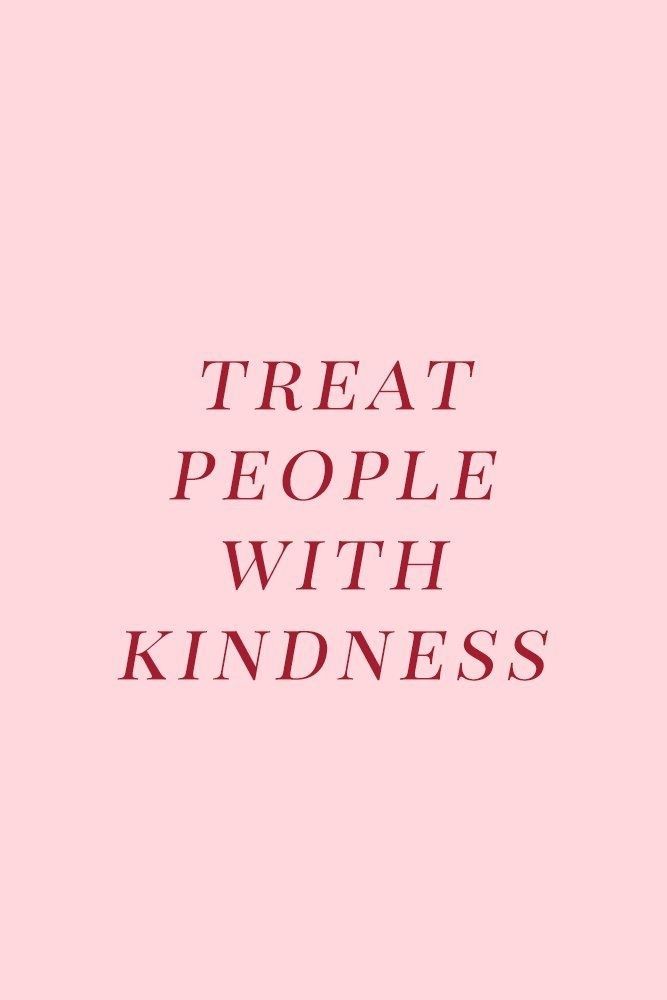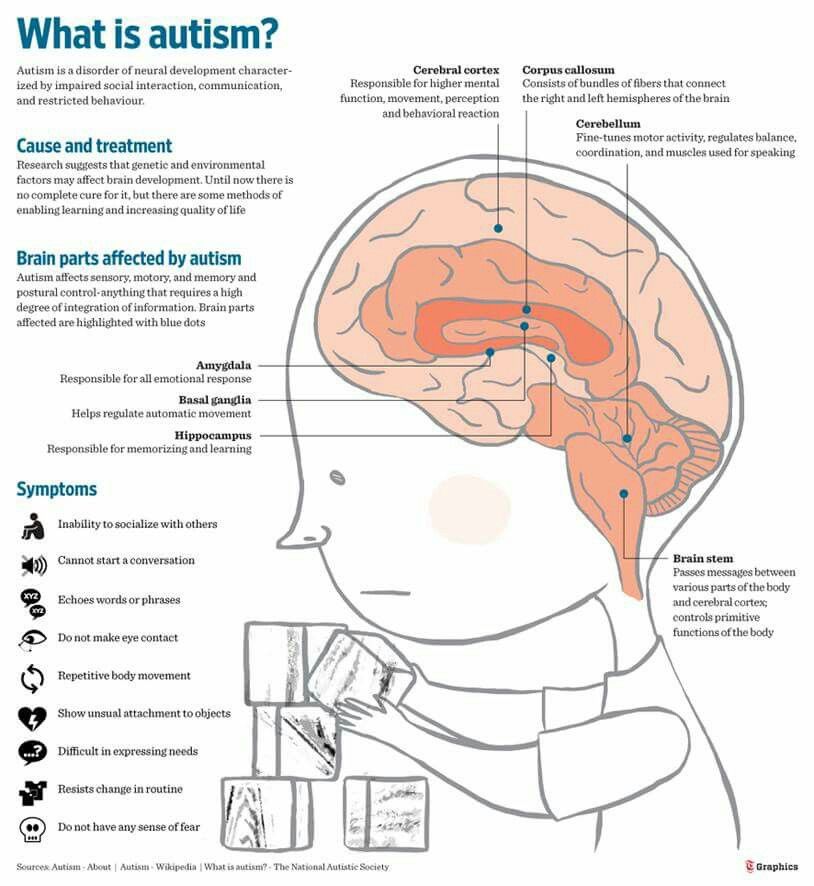Ghosting your therapist
Why It's Okay to Ghost Your Therapist
Unlike most other relationships — where ghosting is frowned upon as an unhealthy behavior — it’s perfectly fine to ghost your therapist. Ghosting — the act of leaving a relationship with no notice, little in the ways of goodbyes, and no future contact — is commonplace in psychotherapy. In fact, I suspect a significant minority of patients do ghost their therapist, and most don’t feel all that good about it.
Here’s why it’s okay to ghost your therapist.
Ghosting is usually a negative behavior. While there are perfectly good, legitimate reasons to unexpectedly leave an unhealthy or abusive romantic relationship, friendship, or even family, for most people ghosting is simply a way of not having to deal with the negative consequences of their decision. It’s never having to say “good bye” because, well, you don’t feel like it.
It’s like choosing to bring home a stray dog, but then abandoning it outdoors when you don’t like all the responsibilities associated with pet ownership. One of the unspoken expectations — and I would argue, responsibilities — of a relationship is the belief that both parties will respect the other person enough to end the relationship like a mature adult. You know, with an actual conversation.
Yes, there are some times where such an ending cannot be had and perhaps ghosting is the right choice — like leaving an abusive relationship. But “feeling bad” about things ending or simply not wanting to have to deal with the messiness that typically accompanies the ending of many relationships are not legitimate reasons. Everyone feels badly when things don’t turn out the way we expected. It’s a natural part of life. Denying that experience is denying the full spectrum of living.
Patients have been ghosting therapists for decades, even before they invented the term to describe someone leaving a relationship unexpectedly and with no further contact.
Most therapists have undergone extensive clinical training and have years of experience to get where they are today. When you see a therapist, you’re seeing (mostly) a well-trained, experienced professional. The therapeutic relationship you have with that therapist is a professional one as well, even though it sometimes feels very personal and unique.
When you see a therapist, you’re seeing (mostly) a well-trained, experienced professional. The therapeutic relationship you have with that therapist is a professional one as well, even though it sometimes feels very personal and unique.
Because your psychotherapist is a trained professional, they know how to deal with the feelings of when a patient leaves the relationship without warning or further contact. It’s still not pleasant for most therapists to experience this, but at the same time, they understand that sometimes it’s what works best for the patient.
Psychotherapy is a professional relationship, completely unlike the relationships with you have with partners or friends. Your therapist’s training prepares them for the possibility of a patient who simply stops showing up to therapy. Maybe because they’re too stressed out to deal with therapy at the moment, or more often, because they’ve gotten everything they can from that particular therapist.
With time and experience, they’ve learned not to take it personally.
Your partners and friends, however, have never been trained on how to deal with ghosting. And in reality, it is a very personal and difficult thing for many people to understand and cope with. The end of a relationship is hard enough. When it’s ended with all lines of communication suddenly cut off, it puts even more stress and hurt feelings on the person who has been ghosted.
So while it’s okay to ghost your therapist, please think twice about ghosting others in your life. I get it — ghosting feels good to the person doing the ghosting. But it leaves out an important component of any relationship — the end. It’s like an author who decides to stop writing at the second-to-last chapter because he knows one of the main characters has to die. It may feel like the right thing to do, but it prevents the relationship from achieving its proper ending.
Please Don't Ghost Your Therapist | Psychology Today
Source: Photo by Brooke Cagle on Unsplash
- Being ghosted, or having someone walk away from a relationship with no communication or explanation, is painful for anyone, therapists included.
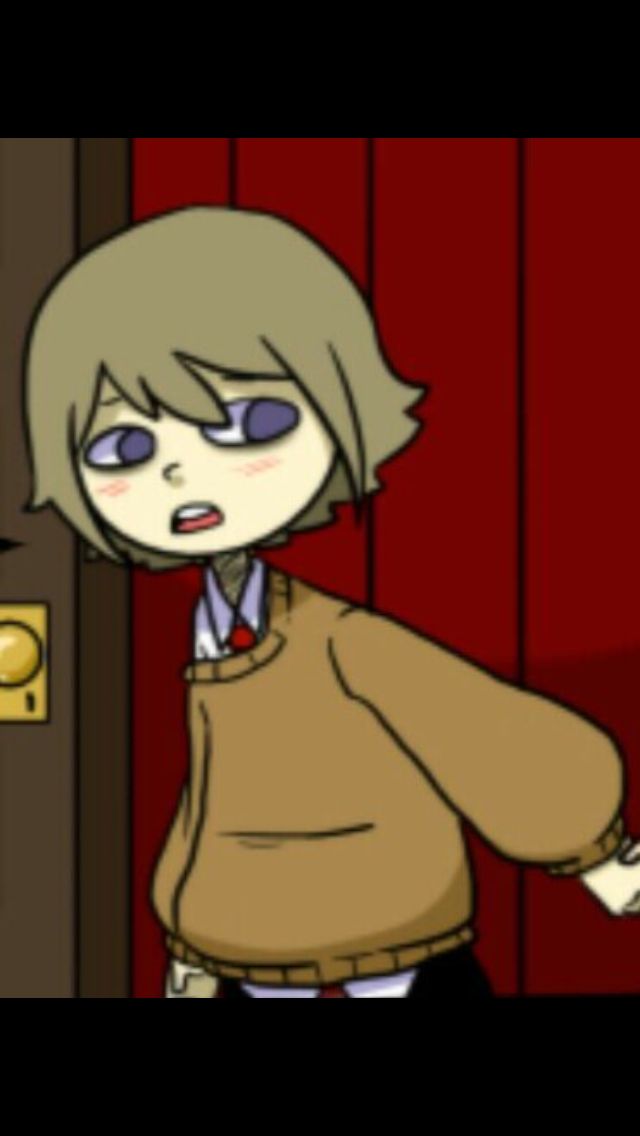
- Leaving a therapeutic relationship openly and honestly can be a sign of progress and an opportunity to practice exiting a relationship on a positive note.
- Therapy is an intimate relationship with someone who cares about your well-being; final sessions, therefore, can actually be transformative experiences.
Dear fellow human,
Therapy is incredibly difficult. Every day that you participate in therapy is a continued choice to keep trying. You don’t just make the decision to go to therapy and then the work is over. It’s an enormous effort, and it can feel really tempting to stop for various reasons.
People have all kinds of reasons for stopping therapy: It might not be the right time for therapy, you may have limited financial or social resources, you may not be ready to work on what you need to, or you may not have found the right therapist yet.
But here is my request as your therapist : Please don’t ghost me.
As a human being, being ghosted by someone is one of the most emotionally painful experiences. It’s heart-wrenching to put work into building a relationship, only to discover your efforts and interest aren’t reciprocated. Obviously, ghosting happens for a myriad of reasons, many of which aren’t personal, but it still hurts.
Being ghosted as a therapist can be similarly painful. As a client, you have the right to terminate therapy at any time and for any reason. And yet, there are some factors to consider before ghosting your therapist.
Ghosting is a paradox.
Therapy can be really scary. It’s incredibly challenging to confront your deepest fears. And yet, often that’s exactly what we need to do.
Sometimes therapists get ghosted for the very reason someone is seeking therapy in the first place. For example, someone who struggles to make and keep relationships may try lots of different therapists and think none is the right fit. Or someone who struggles with social anxiety may feel so self-conscious with their therapist that they want to stop treatment.
If you want to stop therapy based on something that you’re seeing us for, let us know. Therapists are trained to address what we call treatment-interfering behaviors (TIBs). In other words, we are trained to help you explicitly address what interferes with therapy so that you can get the most out of it.
If you’re having the urge to stop therapy, bring it up. That is absolutely a target that takes priority in our sessions. If we open up a conversation, we can better understand how you’re feeling and what’s getting in the way. If it’s an issue of motivation or addressing barriers for treatment, we can address that directly. And you can feel good knowing that you’ve worked to solve or minimize the problem.
We want you to feel like you’ve made a purposeful and informed choice. So even if there are reasons for stopping therapy that cannot be reconciled—like it isn’t the right time for you or the therapist isn’t a good fit for your needs—it is still beneficial to have a discussion. By having a discussion that brings closure to the therapy relationship, you can feel good about your choice. And as your therapist, we can have a sense of what happened, instead of guessing at why you ended therapy.
By having a discussion that brings closure to the therapy relationship, you can feel good about your choice. And as your therapist, we can have a sense of what happened, instead of guessing at why you ended therapy.
Ending relationships is a skill.
Ghosting, at its core, is avoidance. When you end a relationship abruptly and without letting the person know the reason, you are avoiding an emotionally challenging experience. Avoidance is a maintaining mechanism for anxiety, meaning avoidance reduces anxiety in the short-term, but greatly increases it in the long-term. By ghosting, you may be inadvertently making your anxiety over the scary situation stronger. And by ghosting, you’re doing yourself a disservice in not providing an opportunity for yourself to grow.
If the therapy relationship isn’t right for you and you need to end it, do it directly. Stop avoiding. Give yourself the opportunity to conquer an uncomfortable situation with grace and on your own terms. You will feel a greater sense of mastery having had the conversation instead of avoiding it. And you will be practicing a skill that will serve you later in life.
And you will be practicing a skill that will serve you later in life.
You may have some comfort in knowing that you’re not alone in the conversation. Therapists are trained to have challenging conversations about the therapy process and how to end therapy appropriately. Even if you don’t know how to have the conversation, by bringing it up you are inviting the therapist to guide you. We can work collaboratively to either solve the problem or end therapy in an effective way. Either way, you win.
If you aren’t sure how to start the conversation, that’s okay. Here are some effective conversation starters.
- I feel like I want to stop therapy. I’d like to talk more about it.
- Therapy doesn’t feel like it’s working for me. Can we talk about some changes?
- My idea of therapy was something different, but I’m not sure what to do about it.
Certainly, you can feel free to add your own flair to these conversation starters. You don’t have to say the exact “right" thing, but it’s important that you bring it up genuinely and directly. From there, your therapist can guide you.
From there, your therapist can guide you.
Therapy is a relationship that deserves closure.
Therapy is a different kind of relationship than you have with others in your life. You tell your therapist intimate details about your life, without getting many details of theirs. You get someone who listens and holds you in unconditional positive regard. And you get specialized mental health treatment.
But therapy is still a relationship. Data show that the relationship is an active ingredient in therapy. This means that the therapeutic relationship itself can actually provide symptom relief.
Both you and your therapist worked hard to build a trusting therapeutic alliance. When you ghost, you’re signaling that the relationship didn’t mean anything, when the opposite is true. And when that relationship ends without any closure, it’s hard for both you and your therapist.
Without closure of the therapy relationship, you miss out on consolidation of learning, planning ahead for setbacks, and saying goodbye.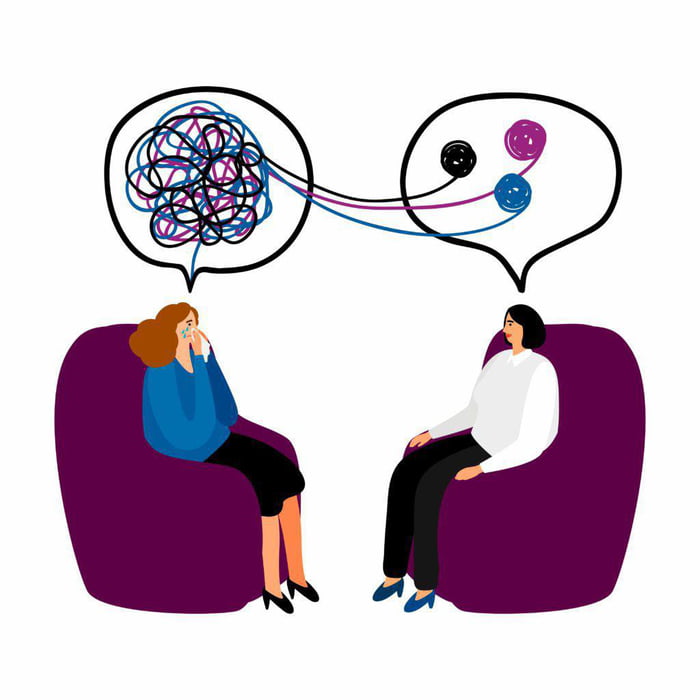 Final closing sessions can be transformative experiences. Don’t rob yourself of that experience because you’ve decided to leave therapy quickly.
Final closing sessions can be transformative experiences. Don’t rob yourself of that experience because you’ve decided to leave therapy quickly.
Your therapist is invested in your well-being, and often what facilitates that is having a closing session.
Life is complicated, and many external and internal factors can interfere with therapy. But your therapist is trained to help you end therapy in a way that’s beneficial for you. By having a conversation, you can determine if your urges to leave therapy are related to what you’re coming in for and work through them in a way that’s supportive. If the factors are irreconcilable barriers, it’s still critical to tell your therapist so you can have a final session and reap the benefits of doing so.
Your therapist cares about you and wants to help you make a thoughtful, informed, and effective choice.
Don’t ghost your therapist. Have the conversation and see how it transforms you. You’ll soon find out that not ghosting never felt so authentic.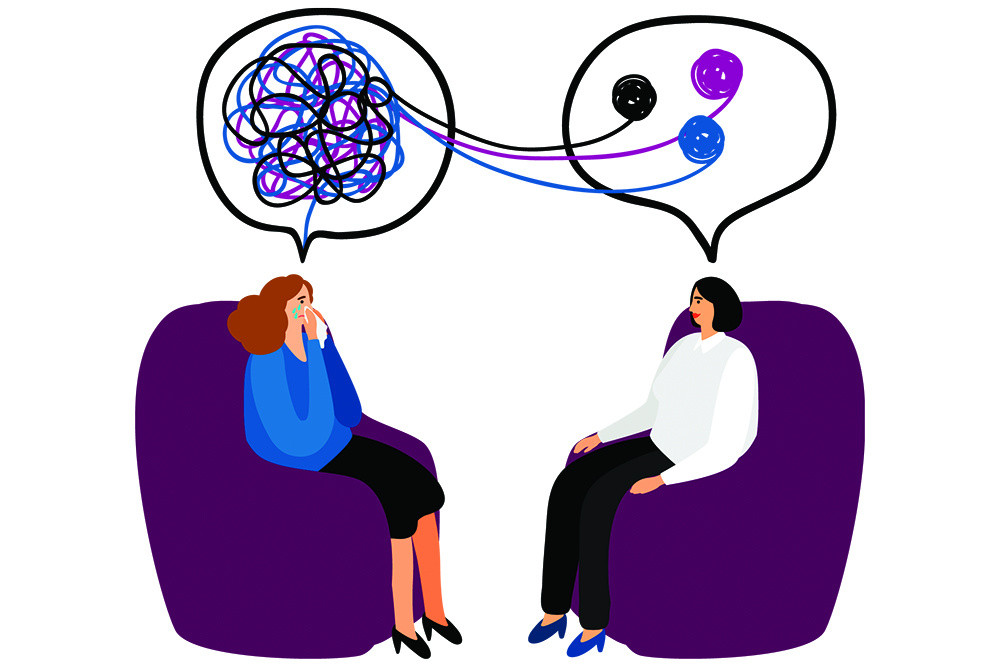
Warmly,
Your Therapist
LinkedIn image: George Rudy/Shutterstock
If you liked this article and want to receive similar content, please subscribe at www.drmarinaharris.com.
Film "Ghost", USA, 2018 - mysticism, fantasy, melodrama.
The main character of the film is the human soul. She can be both a girl and a guy, but still, to a greater extent, the soul feels like a guy. The hero, whose name is denoted by a single letter A (Hey), is forced to travel through other people's bodies all his life. Every day he finds himself in someone else's body, but an important condition is the age, which grows every day.
He travels through other people's bodies, lives a day in the life of other people, each time he meets new people, sees new families and new friends. Thanks to such movements, Hey is smart beyond his age, although youthful maximalism slips in something. But he treats all people with kindness and warmth, not wanting to teach and criticize anyone. He saw a lot, for him the concepts of wealth, status, nationality and religion are not important. Here it is important not to harm the owner of the body, since it will not work to incarnate in the same person a second time, and the mistake cannot be corrected.
He saw a lot, for him the concepts of wealth, status, nationality and religion are not important. Here it is important not to harm the owner of the body, since it will not work to incarnate in the same person a second time, and the mistake cannot be corrected.
He lives like this until he meets Riana, from that moment the plot of the film begins to spin. He falls in love. He has a desire to manifest himself, to be reflected in Riannon, to reveal his secret to her.
It is worth reconciling with this and everyone should go their own way.
Whether their paths will cross again is unknown.
The film is based on the novel of the same name by David Levitan "Every New Day" the original title of the film is "Every day"... What about "Ghost"? Big question..
Apparently translation difficulties.
I liked the idea of the film, for some reason it reminded Brida of Paulo Coelho.
What did the film say to me.
[ read more ]I managed to contain my feelings when I visit groups and participate in psychodrama, or constellations, or art therapy discussions, I have such a feeling of a "day" in someone else's body.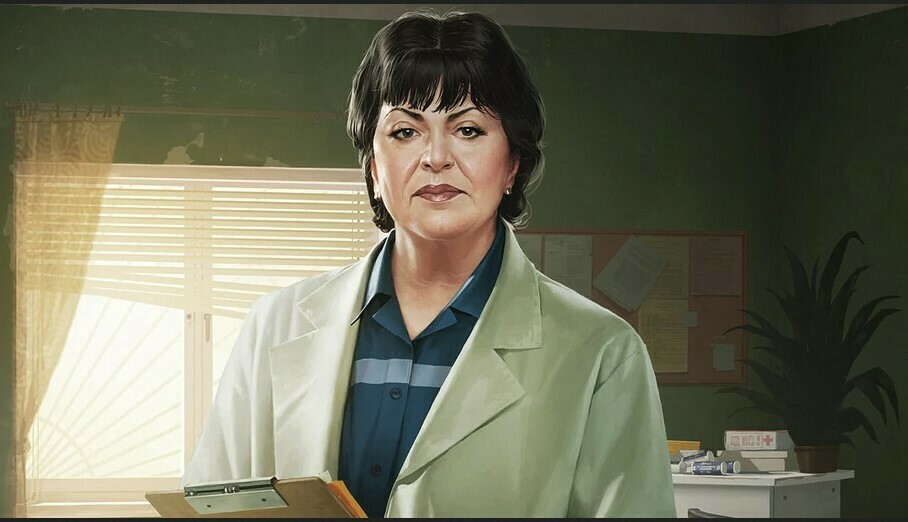 Moreover, I simultaneously lose something and get a new experience.
Moreover, I simultaneously lose something and get a new experience.
About soul and body. When A spoke about the beginning of his journey, he mentioned the plane crash, it turns out that before that he had his own body, but he does not remember. The tragedy is the reason for everything. He was left alone in this vast world without a body.
When there is no body, as if there is no place, there is no opportunity to observe life in development, there is no family, no roots. But at the same time, it is not worth becoming attached to the body, as the mother of the heroine does, it is important to learn to accept yourself in a changed body over time, to see and not be afraid of these changes in another person.
I probably miss people in my life who know how to accept their age, their body. They don’t strive to look younger and cover themselves with Botox, tattoos, extended nails and eyelashes like fig leaves. And at the same time, this does not mean that I am against beautiful comfortable clothes , hairstyles, playing sports, it just has to be somehow according to age or something.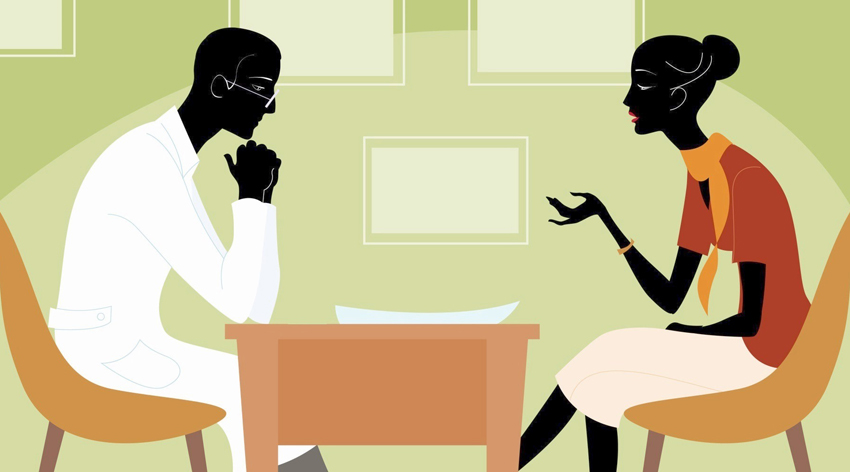 Somehow I got upset that there are few people around me who accept their fate, withstand themselves as they are.
Somehow I got upset that there are few people around me who accept their fate, withstand themselves as they are.
The director's idea of bisexuality seemed ambiguous to me. The protagonist was seen in this as the Demiurge, and Riana's desire to connect with him, despite her physicality, was somewhat puzzling.
I am not for a consumer society, it seems to me that a person should also give something to society, to humanity, this is seen as a balance of give and take. However, I respect other views on this topic, I do not want to offend anyone.
In general, it seems to me that the plot is based on the legend of Cupid and Psyche or the Beauty and the Beast, the Scarlet Flower to the heap. Only instead of Cupid's mother, the witch who bewitched the prince, there is a Choice that is so hard to accept. "No" as an opportunity to stop and think , do not rush after the ideal, disenchant, be disappointed and accept life.
In the meantime, I thought about the transformation of the hero-lover in the time range of cinema in general. There were builders, pilots once in the films of the 40s, then they were replaced by princes, superheroes, there were bandits, then others, vampires, and now the soul. For me it's about something infantile, romantic, early, tearing the masculine off the ground.
There were builders, pilots once in the films of the 40s, then they were replaced by princes, superheroes, there were bandits, then others, vampires, and now the soul. For me it's about something infantile, romantic, early, tearing the masculine off the ground.
The modern ideal of the romantic hero has changed a lot, where will this lead us? I myself adhere to the idea that life in general is as bitter as good coffee.
I'm interested to hear your opinion about the film, about the main characters, about the idea of the author of the novel?
therapy - Institute for Counseling and Systemic Solutions
Anna Petrovskaya and Vlad Syritsa
Working in co-therapy can be fruitful and effective for both psychologists and clients. Or it can be a difficult and traumatic experience.
A few words about the authors of the article - each of us with his own background in the profession (gestalt, psychodrama, systemic phenomenological approach and much more) and each of us has more than 10 years of practical experience. We regularly run client groups as co-therapists and our experience of working together has been quite successful. We spent a lot of time analyzing what hinders and what helps in co-therapy, what are the pitfalls. And we want to share our experience, ideas and best practices, although we understand that in the format of one article it is impossible to describe all the important aspects and factors of joint work.
We regularly run client groups as co-therapists and our experience of working together has been quite successful. We spent a lot of time analyzing what hinders and what helps in co-therapy, what are the pitfalls. And we want to share our experience, ideas and best practices, although we understand that in the format of one article it is impossible to describe all the important aspects and factors of joint work.
In collaborative work, there are different models of cooperation between therapists: someone works in turns, someone gives the client the opportunity to choose a therapist, someone shares the topics of the request. We, however, propose to look at a model in which therapists create a common co-therapy space , from which work with the client then takes place.
Our main message is that, despite the many factors that affect the effectiveness of co-therapy, successful experience is not a miracle or an accident when “people suddenly get lucky and work well together”. We believe that cooperation in co-therapy can be learned, and working effectively and feeling comfortable is a skill that can be consciously developed.
We believe that cooperation in co-therapy can be learned, and working effectively and feeling comfortable is a skill that can be consciously developed.
Contract between co-therapists.
In a simple model of therapeutic relationship, everything is clear - there is a therapist, a client, and a theme (problem) of the client. In co-therapy, another figure appears - the second therapist. Those. the model becomes more complex. What, in connection with this, may arise problems that affect the work?
The first is the space (contact) between therapists . What could be the difficulties? For example, competition, struggle for power, imbalance, disagreement in the procedure of therapy (sagging in work), etc.
Second - space (contact) between therapists, client and client's topic . Every therapist has a different relationship with a client. In work, our personal qualities and typical patterns of behavior always appear. Sometimes, during therapy, a client may be "closer" to one therapist and "farther" from another. What will happen to the therapist who feels "excluded"? For example, he may begin to compete, fight for attention, or withdraw even more.
What will happen to the therapist who feels "excluded"? For example, he may begin to compete, fight for attention, or withdraw even more.
It also matters how and with what we work - what we take into the request, how we go to the solution, what interventions we make, how we support or frustrate the client. Each therapist has a different understanding and approach, so conflicts can arise.
In order to avoid or minimize these problems, therapists must agree on some rules for working together. At the same time, it is clear that it is impossible to take into account and agree in advance all the possible nuances that may arise in the process. Therefore, it is possible to agree only on some of the most important things that exist, one might say - on value level .
From our point of view, the primary task for working in co-therapy is the establishment, maintenance and termination of the therapeutic contract between therapists.
We are all familiar with the concept of therapeutic contract - as some kind of agreement that describes the interaction between the therapist and the client. In our case, the figure of the therapist becomes complex (consists of two parts), while it is important that for the client this figure is one - in one space. Therefore, co-therapeutic contracts must first be concluded.
In our case, the figure of the therapist becomes complex (consists of two parts), while it is important that for the client this figure is one - in one space. Therefore, co-therapeutic contracts must first be concluded.
By agreeing to cooperate, therapists conclude a temporary, voluntary, union. We enter this union on certain conditions, cooperate and end this cooperation (ending is also a very important part of the process). That is, from a systemic point of view, as a result of the meeting of two systems (Therapist 1 and Therapist 2), a new system (Co-therapist) is born.
Accordingly, in this union (new system) the main system rules apply:
1. The new system has an advantage over the old systems for the duration of its existence. That is, in the new system (therapeutic space) there are new rules adopted as a basis by both therapists.
2. Equality in relationships - we are equal. There is no main. Someone may be in charge at one particular moment, but then the roles change.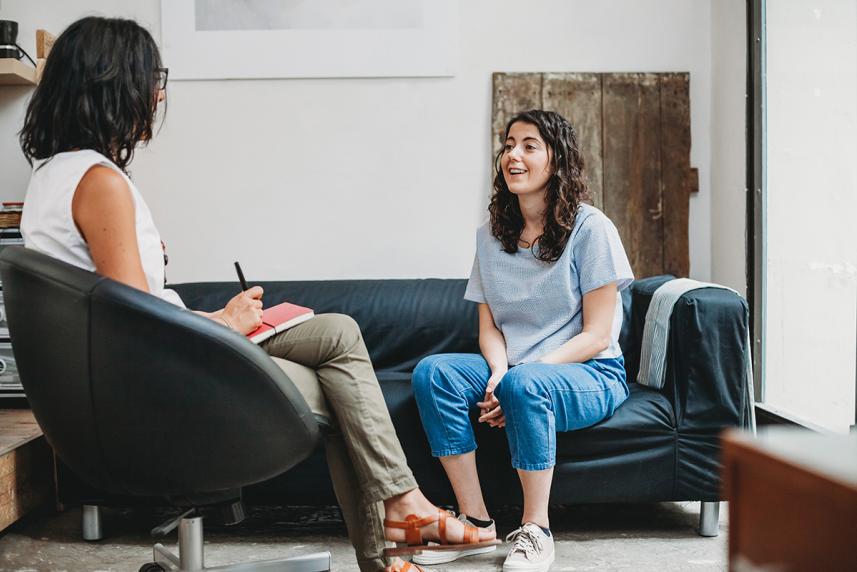
3. Give and take balance – development and maintenance of co-therapeutic communication, balance and intensity of exchange.
4. Merging and autonomy – there is “I” and there is “We”. It exists at the same time. The co-therapist is the new “We” figure.
Uniting values.
Effective collaboration requires common rules, a common foundation. And we are sure that it can be built if you and your partner share common values. Each couple may have their own. We want to offer a few basic ones for discussion. Not sharing these values with a partner can make a co-therapeutic (and not only) relationship impossible.
We are present in the working process with our whole personality, and not just with our professional part. Therefore, co-therapeutic relationships, in general, are subject to the general rules by which relationships develop in a couple.
Interest in each other.
Partnership, both in the human sense and in the professional sense, is impossible without a sincere interest in another person.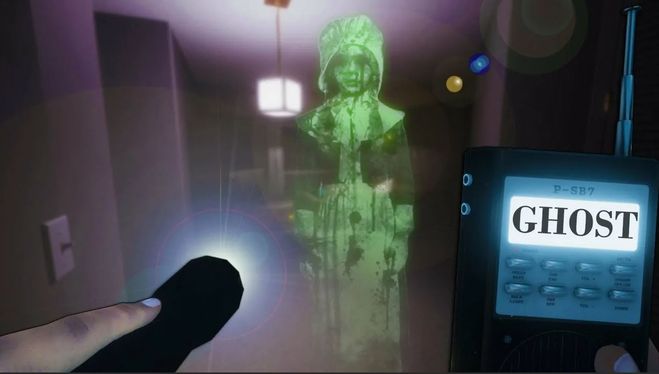 Despite the fact that the co-therapeutic relationship is created for a specific purpose (work for the client) and exists for a certain time (workshop or client group), it is important for a quality co-therapeutic dyad that the mutual interest and sympathy of therapists for each other as professionals and as established personalities, was present at a very early stage. Do not underestimate the internal signals in the form of wariness, internal tension or fears that arise already at the stage of the first agreements on joint work. The likelihood that these implicit tensions will manifest themselves even more strongly at the time of interaction with clients is very high and can significantly complicate work.
Despite the fact that the co-therapeutic relationship is created for a specific purpose (work for the client) and exists for a certain time (workshop or client group), it is important for a quality co-therapeutic dyad that the mutual interest and sympathy of therapists for each other as professionals and as established personalities, was present at a very early stage. Do not underestimate the internal signals in the form of wariness, internal tension or fears that arise already at the stage of the first agreements on joint work. The likelihood that these implicit tensions will manifest themselves even more strongly at the time of interaction with clients is very high and can significantly complicate work.
Focusing only on the benefits of working together is a short-lived motivation. Without sympathy, both on a human and professional level, cooperation will not last long. At the same time, personal sympathy is a more binding factor. At least at the beginning of cooperation and on short-term joint projects. In the case of long-term cooperation, professional respect for what the partner does becomes more relevant.
In the case of long-term cooperation, professional respect for what the partner does becomes more relevant.
Trust in each other.
Without mutual trust, it is practically impossible to work in a co-therapeutic partnership. Despite the fact that trust is something that is formed, tested and maintained by working together, it is important to pay attention to the basic level of trust in your co-therapist already at the initial stage. How much do you trust him as a professional? How much do you trust him as a person? Trust at the human level again turns out to be more primary, at least at the beginning of cooperation.
One of the peculiarities of working in therapy is that you never know what you will encounter in the process of work. Accordingly, the stories told by the "unconscious" of the client may be difficult for some therapist, and it is important to be sure that the partner will take into account your condition and deal with it carefully and respectfully for you.
Respect for each other.
In respecting each other, it is important to maintain two aspects in yourself. First, respect, as recognition of the co-therapist's right to a separate, different opinion from yours. The right to act as he sees fit and right at the moment, without experiencing discomfort and the desire to do everything in his own way. Respect for a partner as a professional gives resistance to pauses and uncertainty in work. Often the level of competition and anxiety between co-therapists is connected precisely with the fact that one does not fully trust the other as a professional. Anyone who believes that he can do better is forced to constantly monitor the work of a partner.
The second aspect is respect as a certain feeling directed towards another person. An experience that relies on agreeing that this is another person and the opportunity to be in contact with him has value for you, and in this contact there is enough space for everyone. Respect for what unites you and what separates you in partnership.
Respect for what unites you and what separates you in partnership.
Recognition of one's own worth.
For a successful partnership, both in the general human sense and in professional activity, the ability to realize oneself as a source of value for another person is a great resource. Relying on your own personal value and your professional experience allows you to choose the right co-therapist and, also, avoid unnecessary competition and drawing attention to yourself in work. Recognizing yourself, your value - it is easier to recognize the other.
Ability to handle conflict and disagreement.
One of the main factors that strengthens or weakens co-therapy is the ability of co-therapists to remain in partnership during difficult situations associated with internal and external tensions, conflicts, ambiguities and controversial moments of work.
The factor that most strongly influences the safety of the co-therapeutic space, for both therapists and clients, is the ability of therapists to respect each other's affects, to give them space and time to manifest in a way that does not interfere with either the group or clients. To strive to clarify the situation, to remain interested in contact - in our opinion, is one of the important components of the effectiveness of the co-therapeutic dyad.
To strive to clarify the situation, to remain interested in contact - in our opinion, is one of the important components of the effectiveness of the co-therapeutic dyad.
Equality and partnership.
An important part of the co-therapeutic relationship is balance in the context of equality and partnership. As in any other couples union, partners are different.
The first thing that usually catches your eye is the gender aspect. There may be (at least for now) only 3 options: Man and Man; Woman and Woman; A woman and a man.
The first is not very common. The second is the most common, simply due to the fact that there are more women in the profession in general. The third, from our point of view, is the most optimal option, due to the fact that it gives maximum projections/transferences - for child-parent and partnership relations, at the same time, it expands/complements the general space of co-therapy.
The second thing that matters both when choosing a co-therapist and influencing the work process are the factors of "objective" equality or inequality: therapeutic experience, intensity and stability of practice, status in the professional community, the presence of students.
Our experience is that the big difference in these moments makes it almost impossible to create a common co-therapy space. The principle of equality is one of the important principles for the formation of a common co-therapeutic space. In the case of a big difference, the option is more likely - a teacher-student, who can also be quite effective and resourceful (for both therapists), but this is a different space.
The third is our personal characteristics. Therapists can be different: open / closed, active / leisurely, saving / neutral, emotional / analytical, etc.
We believe that differences in these and many other personal factors make it possible to create a space for co-therapy, but require greater coherence from the therapists themselves and clarification of these differences. Because, some of them (especially if/not yet realized) can compete with each other, while others (or even the same ones) can complement each other, which allows expanding the field of solutions for the client.
At the same time, any differences can be an additional resource, as they expand the space of co-therapy.
Co-therapy goals.
Another important component of co-therapy, which determines the possibility of being in a state of “we” fusion and remaining in a state of autonomy of “I”, is the transparency of the space of goals of co-therapy itself, the goals of co-therapists and the hierarchy of these goals. To improve the quality of work, the goals must be understood, agreed upon and accepted by partners.
We are helping practitioners, so the main goal of co-therapy is to help the client. This goal is formed under the influence of what we ourselves, as therapists, consider healing for the client, what we see as our therapeutic task, what we can offer the client. Exploring how we ourselves and our colleagues decided this issue for ourselves, we can say that the goal of Co-therapy can be: creating space for possible healing; bringing to harmony the problem area of the client; achievement by the client of his goal, service to something greater.
And we ourselves, as therapists, cooperate with each other to achieve our goals, and they are based on our needs, which are important to be aware of from the very beginning. Why do I want to work in pairs? What needs do I satisfy in this way? It is good for work when both therapists can coordinate the goal of their work with the goal of the client in this work, and maintain an individual approach to each client. We suggest that the goals of therapists in Co-therapy may be as follows:
- Support and resource in each other. financial interest. Satisfaction through co-therapy safety needs . This is often the main purpose of creating a co-therapeutic space by beginning therapists. Association in the union on the basis of scarcity of participants.
- Experience in joint management, professional exchange of skills and learning from each other. Possibility of professional support of a co-therapist. The need for belonging and recognition. Merging into an alliance based on an exchange between the members of the alliance.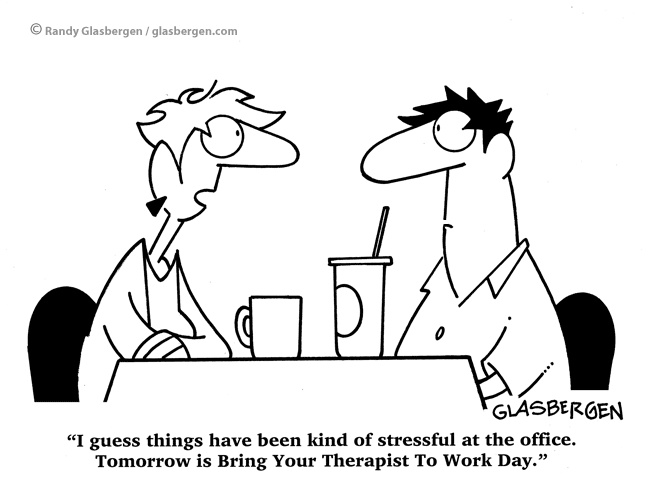
— Personal and professional growth. Direct training in the space of a co-therapist, expanding the therapeutic experience through new clients, creating new forms of cooperation. The need for development and self-realization . Association in the union based on the completeness of the members of the union.
Separately, it should be noted that in co-therapeutic work, the goals of co-therapy are more important than the goals of co-therapists. And even if the individual goals and needs of the partners do not coincide, then the main thing is that they should be common at the level of co-therapy.
Maintenance of the co-therapeutic space.
To sum up the above, we would like to highlight important formal issues that need to be clarified before starting to work together. What is good to pay attention to in pair work, so that from unconscious strategies, it becomes a conscious choice of both:
join the union.
2. Clear and precise goals for working together – “why do I want to work in co-therapy?”. It is important to clarify both your own and your co-therapist's needs, expectations and concerns. For example, in the beginning, for someone there may be a need for security, for another therapist, a need for development. The need for intimacy, collaboration, co-creation, support, etc.
It is important to clarify both your own and your co-therapist's needs, expectations and concerns. For example, in the beginning, for someone there may be a need for security, for another therapist, a need for development. The need for intimacy, collaboration, co-creation, support, etc.
3. Distribution of responsibilities - organization of the group, therapeutic roles (strengths and weaknesses of therapists, favorite and difficult topics / clients).
4. Clarifying the personal factors and systemic legacies of each therapist that affect teamwork.
5. The priority of the co-therapy space is common values, common goals, common difficulties (not you failed, but we failed).
6. Equality of both therapists – equality and respect. Taking into account the human factor, clarity regarding situations where equality is not possible, for example, an actual crisis situation in the life of one of the therapists that affects his performance. The existence of an agreement on how the balance is leveled in cases where equal participation in work is not possible.
Therapists will always have different experiences, different personalities that help or hinder work, different ages/status/length of service, etc. Therefore, they must understand for themselves what they give and what they receive in co-therapy.
Equal partnership - equal financial distribution. At the moment, we consider it correct when income and expenses are divided in half. Otherwise, it is difficult to imagine equality, if the financial distribution, for example, 30 to 70, does it mean that I work only for 30%? It makes sense to separately look at organizational costs, but it is pointless and even dangerous (for cooperation) to divide clients into “mine” and “strangers”. It is important to understand that even if all clients were attracted by one of the therapists, all the same, they came to co-therapy, i.e. to "us". Then, perhaps, in such pairs, for balance, it makes sense to agree on a special "manager's percentage".
7. Openness to dialogue - the opportunity to discuss working issues.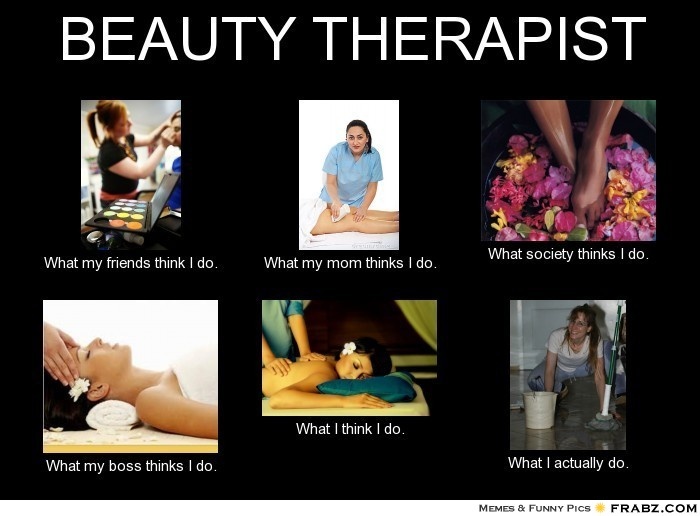 Also during therapy – the ability to freeze-frame, discuss the workflow, share doubts and/or hypotheses, in the presence of the client – this keeps the therapists in contact, reduces uncertainty in the work and is a good intervention.
Also during therapy – the ability to freeze-frame, discuss the workflow, share doubts and/or hypotheses, in the presence of the client – this keeps the therapists in contact, reduces uncertainty in the work and is a good intervention.
8. Termination of the therapeutic contract. Since co-therapy is a temporary union, it must end. And each couple decides for itself in what context the relationship goes after the work is completed. In the case of regular or long-term cooperation, it is very important to separate the contexts of relations - partnerships from, for example, friendly or simply collegial. And don't forget that "my co-therapist may have another co-therapist."
In addition, we would like to note some important features in constellation work in co-therapy, which presupposes a certain format of interaction between the therapist and the client. Therefore, the opportunity to conduct constellations in a co-therapeutic alliance has its advantages and difficulties. The following text is aimed at specialists working in the system-phenomenological approach, but in general it will be useful for other modalities as well.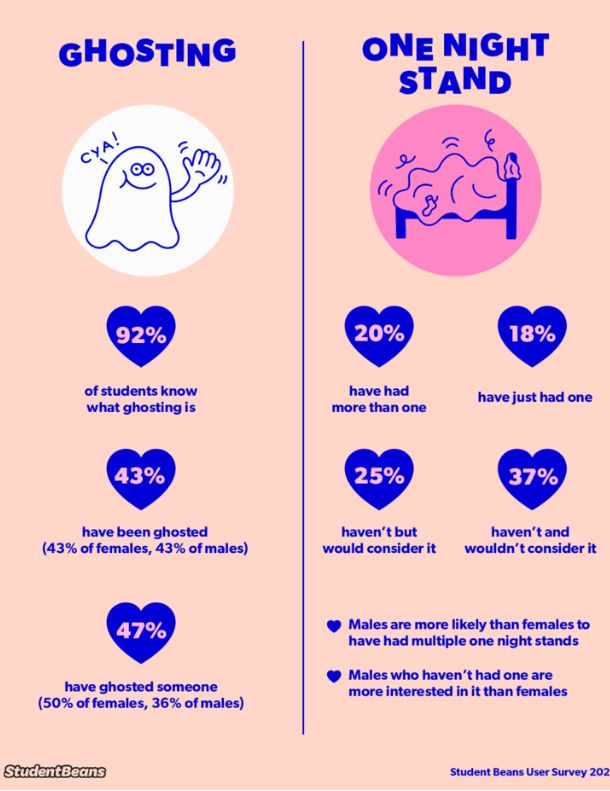
About co-therapy resources in constellation approach.
Working together can be very resourceful, primarily for the client, but, not least, for the therapists themselves too. Due to which resources in co-therapy increase:
- Pairing of positions . Distribution of focus. The ability to be in “two places” at the same time, i.e. it is easier to focus on different aspects and support different processes. Also, it is effective to work when the client is a married couple.
— Blind spot reduction in therapists. Different professional and personal experiences of therapists increase the possibilities of co-therapy. And they reduce the area of complex and undeveloped topics for an individual therapist.
- Stability and stability . Due to the fact that each therapist has his own traumatization and degree of elaboration, the likelihood that both will “get stuck” at the same time tends to zero. Due to this, the work goes almost without "hanging" and pauses.
Due to this, the work goes almost without "hanging" and pauses.
— Increasing the impact force. The strengths of each individual therapist allow the co-therapy space to be constantly turned towards the client in the best way for the client. Each moment of time there is an opportunity to be in contact with the client to the therapist who is now more stable.
- B o More resource. Each therapist's resources complement each other and the client. We enter into resonance not only with injured, but also with resource parts. In our experience, work with very serious dynamics (collective and transgenerational traumas) took place with less resistance and less "tragedy" that could drag us into the "heavy" in the case of individual work.
- Depth and balance. Two people make it easier to hold the spread space. And all its aspects - client, topic, request, solution orientation, deputies, observers, interventions, etc.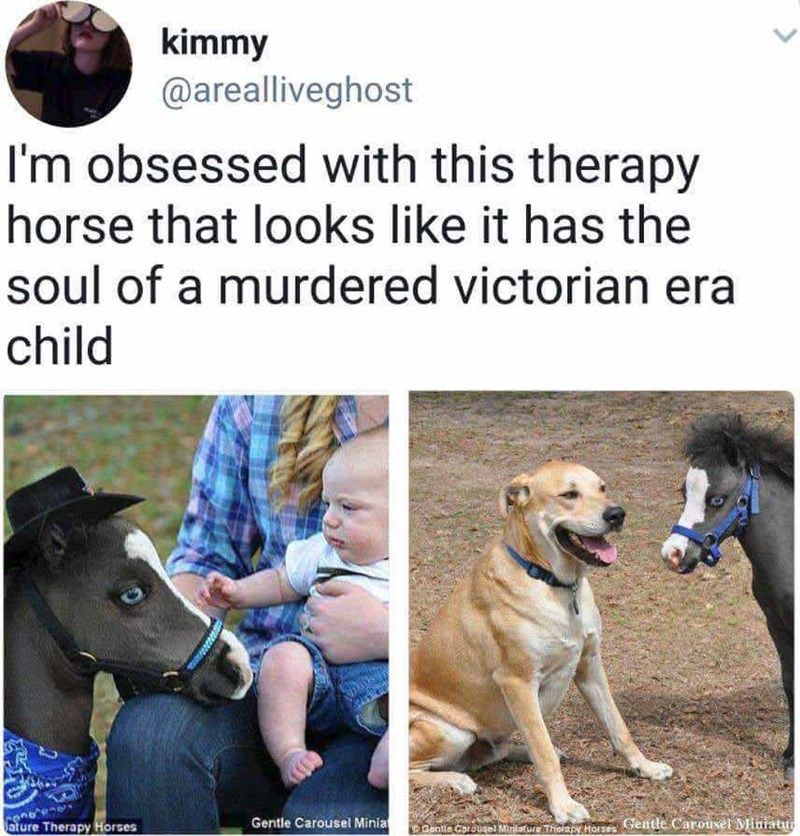
From the feedback of the participants of the client group in co-therapy: “ I was not a client, I was present at the group as a substitute. Most of all I was surprised by the field that was created by the presenters. Clear, simple, very resourceful. With a harmonious interaction of male and female energies. With a lot of respect - thank you, Vlad, and love - thank you, Anna. To customers, their stories, their desires. Two therapists, a man and a woman, are able to create a space in which, very carefully and safely, an internal problem can open up to other facets and turn into a resource for someone who does their job. Irina R., 42 years old.
- Additional choice. When working in a female-male dyad, the therapeutic request itself can choose the therapist. There are all-male and all-female healing stories. The constellation field can then be felt gently pulling the second therapist aside. Due to personality traits, some therapists work better with partnerships, parent-child, birth dynamics, with different types of clients, etc.
— Paired perception. Differences in the emotional feeling of the field and its analytical processing makes it possible to make the work for the client not only more clear and understandable, but also to include interventions in therapy that find a greater response in the soul of the client.
From the feedback of the participants of the client group in co-therapy: “It's amazing how the therapists have consistently made steps in my work. The amazing thing is that during my work I had the feeling that I was communicating with one person, and it was not Vlad, and not Anna, but someone else who sometimes spoke through Vlad or did something through Anna. It was very comfortable and right for me when one of the therapists worked with my deputy, and the second one was sitting next to me, and I could feel his attention and support. It was very safe in your field, thank you very much for your work.” Natalya K., 38 years old.
About the difficulties of co-therapy in constellation approach.
The client's internal conflict during the initial interview is often projected onto the therapists themselves, enticing them to support one of the client's internal positions, beliefs, subpersonalities, or loyalties. And the stronger the split in the client inside, the more the therapists' opinions regarding further work may differ.
That is, the client's internal splitting can affect the relationship between therapists. And, accordingly, vice versa - a hidden conflict between therapists can intensify the client's internal split. It is very good if this is realized by the therapists themselves and can be used in their work. The main antidote that allows therapists to overcome this imposed conflict is a basic trust in each other and respect for the opinion of the other.
The main conflicts associated with the dynamics of the client and loading the space of co-therapy can be identified:
— The emergence of dynamics in the client associated with the figures of father and mother.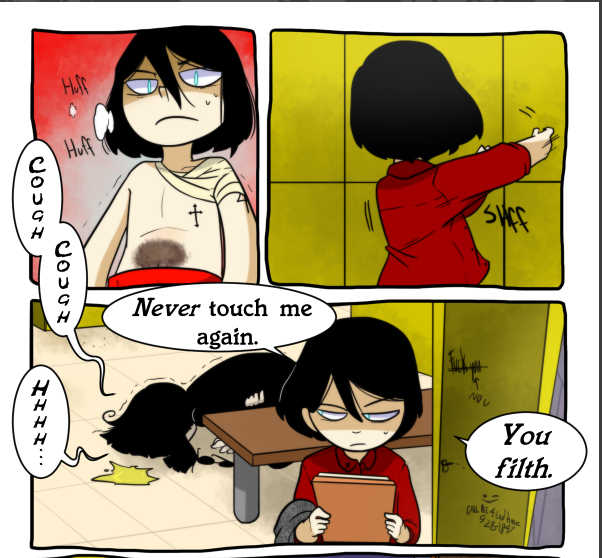 Unconscious regression to a childish position.
Unconscious regression to a childish position.
- The client develops greater loyalty and trust in one of the therapists, as a symptom of childhood loyalty. Kind mother/evil mother or father I love/mother is afraid. Accordingly, resistance is aggression or withdrawal from another therapist
- Projection on therapists as a conflict of choice. Divorce or stay. Jam not to choose.
- Projection onto therapists of internal splitting. "Exile" and "Defender" in terms of subpersonalities.
What else can negatively affect us as a team:
1. History and experience of human relationships between partners. This story may be much more than a professional relationship story. It includes the accumulated experience of friendly, collegial, often family or romantic relationships, the history of previous professional (co-therapeutic) relationships, including the history of co-therapy itself.
2. A complex of problems that have developed in the children's perception layer: competition and struggle for power; drawing attention to yourself; avoidance of responsibility; seeking love and approval; difficulties with delegation of authority.![]()
3. Systemic influences:
· Influence of previous traumatic experience, both professional and relationship experience.
· Influence of system-generic dynamics.
Influence b o of larger systems – archetypal layer, layer of collective traumatization, contexts of place of work, etc.
The processes taking place in the client and in the group will be reflected in the processes taking place inside the dyad. And vice versa - the relationship of co-therapists, one way or another, will influence the internal processes of the client. For example, unconscious competition between leaders, and even hidden struggle for power, can lead to the fact that these processes (hard struggle for power and unconscious competition) can influence the dynamics of the client. To minimize the impact of negative factors on teamwork, it is important that the co-therapeutic couple is stable and maintains an adult functional relationship.
Conclusion.
All this allows us to be clear and stable in pair work, to enter into contact as if into a new space, to work in this space for the client, to be resourceful and resistant to difficulties, to reach the goal, and then to leave contact with gratitude to each other.
Summing up our reflections in this article, following the well-known analyst Otto Krenberg, who described the factors of maturity in a couple relationship, we formulated the signs of a mature relationship in a professional couple:
1. Interest in professional exchange of experience: desire to learn from a partner, openness and desire to share one's experience.
2. Basic trust: mutual ability to be open and honest, even about their own shortcomings.
3. The ability to see and recognize both one's own imperfection and the imperfection of a colleague.
4. A general understanding of the meaning of work, the structure of the psyche, the possibilities of constellations, one's tasks in work and the possibility of healing in principle.
5. Mature addiction: the ability to accept help (without shame, fear or guilt) and provide help; a fair distribution of tasks and responsibilities - in contrast to the struggle for power, accusations and the search for right and wrong, which lead to mutual disappointment.
6. Recognition of the inevitability of failures, mistakes and the need to defend the boundaries, both one's own and those of the team. Understanding and recognition of separateness and difference of each other.
7. Modesty and gratitude. It is important not to forget to give thanks, even when you have been working together for a long time and comfortably. Recognition of something “beautiful and unexpected” done by your partner is an important co-therapy resource. Also, gratitude and recognition of merit helps to “close” the space of co-therapy.
Working in co-therapy can be a wonderful experience of professional growth and mature partnership. We invite you to further explore this topic, and invite you to share your experience and understanding with us.
With best regards,
Vlad Syrica ([email protected]) – psychologist, psychodramatist, training therapist (Master) “Systemic Phenomenological Psychotherapy (Counseling) and Systemic Constellations”.
